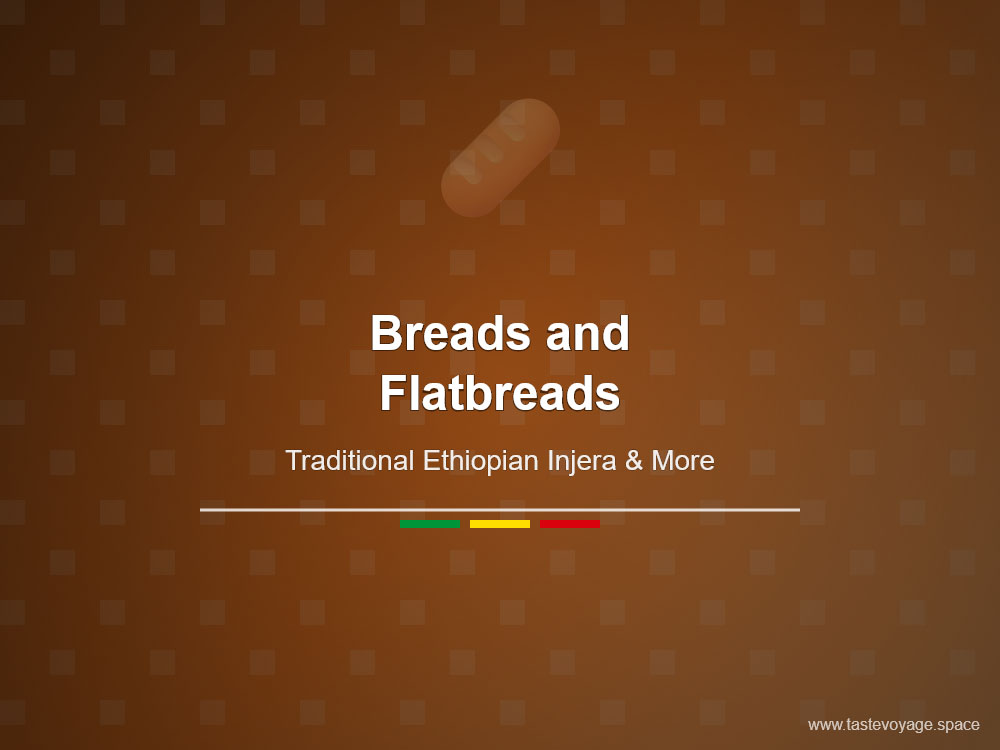Authentic Ethiopian Fermented Grain Bread Recipe Guide
Travel the World Through Food >> Breads and Flatbreads>>Ethiopian Cuisine>> Authentic Ethiopian Fermented Grain Bread Recipe Guide
Authentic Ethiopian Fermented Grain Bread Recipe Guide
Discovering Ethiopian Fermented Grain Bread: A Cultural and Culinary Gem
Ethiopian fermented grain bread, often celebrated as a cornerstone of Ethiopian Cuisine, embodies more than just nourishment—it reflects centuries of tradition, community, and cultural identity. Known locally as “injera,” this unique flatbread is renowned for its distinctive tangy flavor, spongy texture, and versatility on the dining table. It stands as a symbol of Ethiopian hospitality and culinary ingenuity, inviting both locals and visitors to experience a taste of Ethiopia’s rich heritage.
The Cultural Significance of Injera
Injera holds a special place in Ethiopian culture, serving not only as a staple food but also as a communal centerpiece during meals and celebrations. Traditionally prepared with teff—a tiny grain native to Ethiopia—injera is more than just bread; it is a vessel that holds the social fabric of Ethiopian life. Sharing injera signifies unity and togetherness, as it is often placed in the center of the table, allowing everyone to partake from the same source. Its preparation and consumption are deeply rooted in tradition, often passing from generation to generation, preserving cultural identity and culinary knowledge.
The Culinary Significance of Fermentation
The process of fermenting the grains to produce injera is a testament to Ethiopia’s culinary ingenuity. Fermentation enhances the bread’s flavor profile, lending it the signature tanginess that sets it apart from other flatbreads worldwide. This natural fermentation process not only boosts the taste but also improves digestibility, making injera a healthful food choice. The fermentation time can vary, allowing cooks to tailor the bread’s flavor and texture, which adds a layer of artistry to its preparation.
A Showcase of Indigenous Ingredients
Ethiopian fermented grain bread highlights the country’s indigenous ingredients, particularly teff, which is prized for its rich nutritional profile. Teff grains are packed with protein, dietary fiber, and essential minerals, making injera a highly nutritious staple. While teff remains the traditional choice, other grains such as millet, sorghum, and wheat are sometimes used, showcasing regional variations and adaptations. This emphasis on local grains underscores Ethiopia’s commitment to sustainable agriculture and culinary resilience.
The Culinary Versatility of Injera
Beyond its cultural roots, injera serves as a versatile base for a variety of Ethiopian dishes. It acts as both a plate and utensil, with stews, lentils, and vegetable dishes piled atop its surface. Its absorbent nature allows flavors to meld beautifully, enhancing the overall dining experience. Whether served during daily meals or special festivities, injera’s adaptability and unique taste make it an integral part of Ethiopia’s culinary landscape.
Celebrating a Timeless Tradition
Injera’s enduring presence in Ethiopian cuisine is a testament to its timeless appeal. It connects generations through shared culinary practices and reinforces cultural bonds. Its significance extends beyond taste, symbolizing community, tradition, and the resilience of indigenous foodways. As more people around the world explore global cuisines, Ethiopian fermented grain bread continues to captivate with its rich history and vibrant flavors.
Embrace the Heritage of Ethiopian Fermented Grain Bread
Exploring injera is a journey into Ethiopia’s heart and soul. Its cultural value and culinary significance go far beyond the plate, offering a window into a vibrant heritage that celebrates community, tradition, and innovation. Whether you are a food enthusiast or a cultural explorer, appreciating the beauty of Ethiopian fermented grain bread enriches your understanding of this remarkable cuisine. Experience the tradition, taste the history, and savor the timeless charm of injera.
